- Home
- Mary Higgins Clark
Kiss the Girls and Make Them Cry Page 21
Kiss the Girls and Make Them Cry Read online
Page 21
The Uber dropped Gina in front of a four-story structure that was set back from the road. A small parking area was in front. A painted sign welcomed visitors to Willow Farms. A set of glass double doors was in the center of the building. Looking through them, she could see a vestibule leading to a twin set of elevators.
At the moment there was no one in sight. Gina tried opening one of the doors. Predictably it was locked. It’s so much easier in Manhattan, she thought. Most buildings there had doormen. In exchange for a smile and a cash tip, most of them were happy to provide general information about the residents. Here it was going to be potluck and a lot of waiting.
Ten minutes later the elevators opened and a black man carrying a briefcase walked toward the front door. He appeared to be in his forties.
“Excuse me, sir,” Gina said, “did you happen to know a Paula Stephenson, a woman who lived in the building until a few months ago?”
“I’m on the second floor. She was on the fourth. If you’re here about her apartment, I’m pretty sure it was sold last month.”
“No, thanks, not about that. I’m hoping to talk to anyone in the building who knew Paula. Any ideas?”
“I’m afraid not. The first time I heard her name was when the police came after her.” He paused. “Passing. Sorry I can’t help.”
Now she knew Paula lived on the fourth floor. That was progress, Gina thought to herself.
Fifteen minutes later a taxi pulled to a halt in front of the building. A woman who appeared to be in her late seventies exited and made her way to the front door. She eyed Gina suspiciously.
“Excuse me, ma’am,” Gina began.
“I hope you know there’s no soliciting allowed here, young lady,” the woman snapped.
“I promise I’m not here to sell anything. By any chance did you know a young woman named Paula Stephenson who lived on the fourth floor?”
“That one,” she replied, almost spitting out the words. “I’ve never had a drop of alcohol my whole life. I don’t think that one ever let a day go by that she wasn’t inebriated.”
“So you knew her?”
“I didn’t say I knew her. Just being in the elevator with her and her breath was enough to make me feel like a drunkard. Do you go to church?”
“Yes, as a matter of fact I do,” Gina answered, surprised by the question.
“If the young people today went to church, they wouldn’t need to drink or take drugs, and they’d face their problems instead of killing themselves.”
“I’m sure they would,” Gina said as she tried to think of a graceful way to end the conversation. She could see through the doors a woman pushing a stroller headed her way and did not want to miss the opportunity to speak to her.
“Thank you, ma’am, you’ve been very helpful,” Gina said as she kept holding the door.
“Keep going to church, and pay attention when you’re there,” the woman admonished her before heading toward the elevators.
Gina held the door open as the woman pushing the stroller approached. She appeared to be about her own age. Dark hair to her shoulders framed even facial features.
“Your daughter is lovely,” Gina said, leaning toward the little girl, who returned her smile. Two small teeth protruded from her lower gum.
“Why, thank you” was her mother’s response, in a strong Southern accent.
“I don’t want to hold you up, but by any chance did you know a building resident named Paula Stephenson?”
“Oh, I did. That was such a shame.”
“Paula’s friends lost track of her after she left New York. Would you mind if I ask you a few questions about her?”
“Of course not. I’m taking my little Scarlett for her walk. Why don’t you come with us?”
After exchanging names, Gina followed Abbey around to the back of the building. Beyond the pool was a field. A paved path ran along a brook. “Scarlett and I walk this way every morning, except of course when it’s raining.”
“How well did you know Paula?”
“She lived across the hall from me, in 4A. I’m in 4B. Paula always made a fuss over Scarlett. She’d buy her gifts. My husband travels a lot for work. When Paula was going to the store, she’d knock on my door and ask if I needed anything.”
“Did you get to know her?”
“I did. Lots of days we were the only ones around. She’d come over for coffee. I’d have coffee. Paula would bring her own stuff. I’m not stupid. I know she had a drinking problem. But beneath it all, she was really a sweet person.”
“I agree, and I’m surprised the police are treating her death as a suicide.”
“I heard that or read that, too. I’m really shocked.”
“Why is that?”
“I told you we talked a lot. She was really down after her and her boyfriend broke up and she lost a lot of money. I was really worried about her then. But the last time I spoke to her she sounded a lot more positive. I remember what she said. ‘I have a way to get back on track financially.’ ”
“Did she tell you how she was going to do that?”
“No. She said something about getting tricked the first time, but now they were going to pay up.”
“Did she ever say who ‘they’ were?”
“No, she didn’t. Lots of times Paula just needed somebody to listen and not ask too many questions.”
“How did you find out she died?”
“I knew something wasn’t right. We would talk or see each other almost every day, and then nothing. I was pretty sure she’d have told me if she was taking a trip. Her car was in its usual parking spot. I felt funny about calling the police, so I phoned the building manager. They’re really nice. They came over and found her.”
“Besides you, was Paula friendly with anybody else in the building? Did she mention any friends?”
“None that I can recall. I’m pretty sure I was the only one she talked to here.”
The horseshoe-shaped path was now leading them back to the rear of the building.
Gina continued. “So you were really surprised when you heard Paula had taken her own life?”
“I was. Especially when I heard how she did it.”
“Why do you say that?”
“My husband’s from New Jersey. His mother freezes bagels from the store in their town and sends them to us. One day I offered one to Paula, who said no. She told me she almost choked on a bagel when she lived in New York. Somebody in the restaurant had to help her cough it up. After that she was afraid of any food that might make her choke.”
“So somebody who had a fear of choking—”
Abbey finished the sentence, “doesn’t seem like the kind of person who would hang herself.”
“After they found Paula, did the police ask the other tenants in the building any questions?”
“About what?”
“Did anybody see someone around the building who didn’t seem to belong here?”
“No, why would they?”
“It was just a thought. You’ve been very helpful. My contact information is on this card,” Gina said as she handed it to her. “If you remember anything else about Paula, please be in touch.”
“You don’t believe Paula killed herself. Am I right?”
“I’m not sure what to believe right now. I’m gathering information.”
Gina thanked her again, bent forward, and said goodbye to Scarlett.
76
Gina’s investigation into Paula Stephenson’s death had an eerily similar feel to her attempt to find out what really happened to Cathy Ryan in Aruba. She had identified anomalies—an experienced and careful Jet Skier’s panic leads to a fatal crash; a woman who is optimistic about getting her life together chooses to end it in a way that would make her experience one of her worst fears. Both had bad experiences at the same former employer who was trying to settle with them.…
“You idiot!” Gina said aloud as she stared out the window of the Uber that was taking her to the funeral
home.
“Excuse me, ma’am,” the driver said, sounding somewhat annoyed.
“Sorry,” Gina apologized. “I was talking to myself.”
In her mind she had put Paula in the same boat with Cathy Ryan, former REL News employees contemplating settlements. Gina replayed in her mind what Abbey had shared with her. Paula was depressed after losing a lot of money and breaking up with her boyfriend. She saw a way to recover financially. She had been tricked, but now they were going to pay up. What if, similar to Meg, Paula had taken a settlement from REL. It made sense. Gina opened her iPhone to Zillow and put in the condominium’s address. Paula had purchased it a little over a year ago for $525,000. That’s a lot of money for a person in her early thirties, particularly for someone who’s not working.
As she had done with Meg, Gina would try to find out if there was any family money behind Paula. Cathy Ryan and Paula Stephenson may have had two things in common. Both were balking at REL News’s attempts to reach final settlements with them; both died while they were negotiating.
A soft ring announced the arrival of a text. It was from Wes Rigler. Healthy, 8-lb Ann Marie arrived at 9:00 this morning. Mom and baby doing fine. Been busy gathering info. When can we meet?
Gina texted her congratulations and that she was en route to the Smith Gardens Funeral Home for a one o’clock appointment. He responded immediately. Perfect. I’m 10 minutes away. Will meet you there.
Smith Gardens was a one-story, white-brick building with black shutters. A one-lane driveway leading to the front door cut across a well-manicured lawn. To the left of the structure was a large, mostly empty parking lot. As a result of a truck accident, what was supposed to be a ten-minute trip had taken closer to twenty. Not wanting to be late for her appointment, Gina hurried toward the door. She stopped when a white Ford Explorer pulled quickly into the parking lot.
A middle-aged, balding man with a friendly smile and a folder in his hand hurried toward her. His sports jacket struggled to contain the wide shoulders beneath.
“You must be Gina,” he said, as a large hand enveloped hers.
“I am. Nice to meet you, Wes.”
“We can talk more afterwards, but I think you’re going to like what I brought,” he reported as he opened the door for her. Seeing no one, they walked down a hall. Viewing rooms were on either side. A man in a dark suit emerged from the one on the left and walked toward them. “Good afternoon. May I help you?”
“Yes. Thank you. My name is Gina Kane. Mr. Rigler and I are here to see Mr. Smith.”
“Right this way. He’s expecting you.”
Vaughn Smith looked up from his desk when he heard footsteps outside his door. He popped out of his chair, introduced himself, and shook hands with Gina. He looked at Wes and said, “You look familiar, but I’m not placing you.”
Wes smiled. “I was a detective with Durham PD. Retired now and working as a private investigator. I’m hoping we both can be of assistance to Miss Kane.”
“Me too.” Pointing to two chairs he said, “Have a seat. Let’s get started.”
Gina followed the same strategy she had chosen when discussing Cathy Ryan. Without identifying REL News, she explained that several young women had similar negative experiences at a previous employer. In Gina’s opinion the police in Aruba were hasty in attributing the death of one of the women as the result of an accident. Now a second was dead, and despite possible evidence to the contrary, her death had been deemed a suicide.
“Do you remember,” Gina wasn’t quite sure how to frame the question, “handling Paula?” she asked Smith.
“I do,” he said as he tapped on the laptop on his desk. “After the Durham police located the family, I was contacted by Swartz Funeral Home in Xavier, Nebraska. They sent me the authorization papers, which I took to the Medical Examiner’s Office to act on behalf of the family. The body was released to me.”
“Do you remember anything out of the ordinary about the injuries to her body? My understanding is that the police were investigating her death as a suicide.”
“I do. When a ligature, in this case a bathrobe sash, is used in a hanging, it generally causes contusions, broken blood vessels under the skin. I recall there was something odd about the ligature marks. Over my thirty years in the business I’ve handled a fair amount of suicides, including hangings. The contusions on her neck were not consistent with what I usually see.”
“Did you report this to the police?”
“I did, but I’m sorry to say they didn’t follow up. The opioid epidemic has kept us very busy.”
“Did the police do anything?”
“Not to my knowledge, but as I look at the date I can understand why. They had their hands full at the time. White supremacists were in town protesting a decision to take down a Confederate monument. Supporters of the decision were here in force. The police were preparing for a major confrontation that fortunately did not materialize. At a time like that, it’s easy for a case like this to not draw attention. With no family members screaming at the press for an investigation, no one wants to rock the boat. It slipped through the cracks.”
“Did you by any chance take any photos of Stephenson’s body?” Gina asked.
“No, I didn’t.”
Rigler interjected for the first time. “One of my former colleagues gave me these,” he said as he pulled a stack of color photos from an envelope.
“Are these released to the public?” Gina asked.
“Never,” he said. “I promised my friend I’d get the scene photos back to him tomorrow. I didn’t bring these up sooner, Vaughn, because first I wanted to hear what you remembered.”
Smith waved him off. “That’s fine, Wes. Let’s have a look.”
Rigler spread the photos of Paula’s nude body on top of the desk. He and Gina came to Vaughn’s side so they could look at them together. Vaughn had pulled a large magnifying glass from his top drawer and was slowly rotating it around the neck area in the photo of Paula’s upper torso.
Rigler pulled a paper from his folder and referred to it as he spoke. “The victim was found hanging from the door on the outside of the bathroom. The sash of the silk bathrobe she was wearing was tied around her neck as you can see in this picture,” he said, pointing with his finger. “The other end of the sash was tied to the door handle on the inside of the bathroom.”
Smith used a pencil to trace discolorations on Paula’s neck close to her jawline. “Contusions in this area,” he said, “are consistent with what you would find in a hanging.”
“I know I’m the novice in the room,” Gina interjected, “but isn’t the will to live very strong, even in a suicide victim? Once she started to strangle, wouldn’t she use her hands on the knot to try to save herself?”
“The process, losing consciousness and then death, happens much faster than most people realize,” Rigler responded. “The science behind it is fascinating. The rule of thumb is that after about thirty-three pounds of compression of the airway and only eleven pounds of pressure on the carotid arteries, the victim will lose consciousness and quickly die. When the ligature is pulled tight by the body weight, the victim quickly becomes unconscious due to lack of oxygenated blood to the brain. In movies and on TV shows they usually show a hanging victim that jumped off a chair or kicked aside a stool. You don’t need that. Victims often successfully hang themselves by sitting up against a door, tying the ligature to the doorknob, and leaning forward.”
“Isn’t that how Anthony Bourdain, the CNN celebrity chef, killed himself?” Gina asked.
“Yes, it is. I had one like that only a few weeks ago,” Smith replied. “Take a look at this furrow.” Turning to Gina and pointing with his pencil to discoloration on Paula’s lower neck, he said, “Furrows are these horizontal grooves that were made by the bathrobe sash. They’re more pronounced than I would have expected.”
“If this was a suicide, could the sash have scraped up her neck when she was against the door and let herself drop?�
� Gina asked.
“It probably did do that, but it wouldn’t make marks like these,” Rigler said, pointing to dark blue areas.
“If you were looking at these photos for the first time,” Gina began, “what would you say happened to her?”
“Wes, I’ll let you take that one,” the mortician said.
Rigler continued to stare at the picture. “I would say this is a homicide that was staged to look like a suicide. And I think I know why these ligature marks don’t make sense on a suicide victim. In police work when we’re at a crime scene, most often we’re seeing the end result. We try to imagine the series of events that took place to create this result. At first glance, this case had all the hallmarks of a basic suicide. As I studied the scene photos more closely, not everything was adding up. What scenario could have created these ligature marks? Suppose this was a homicide. The perpetrator surprised her from behind. Picture him forcing her down on her bed face first. Her face against a mattress would muffle an attempt to scream. He yanked the sash off her bathrobe and slipped it around her neck. With his knee against her back, he pulled hard upward to get her to stop struggling. That would explain the prominent horizontal furrows on the lower neck. He then took the sash, tied it to the bathroom door handle, looped it over the top of the door, tied it around her neck, and released her into the position where she was found.”
“Does that explain something else?” Smith asked. “The bruising on her upper neck closest to the ligature is less severe than one would expect following asphyxiation from hanging. There may have been less blood in the affected area—”
“Because she was already dead?” Gina interjected.
“Precisely,” Rigler answered.
Gina broke the silence that followed. “Did she leave a note?”
“No note,” Rigler responded.
“Does that mean anything to you when you’re trying to determine if this was a homicide?” she asked.
“Not at all,” he replied. “Contrary to popular belief, most suicide victims don’t leave a note.”

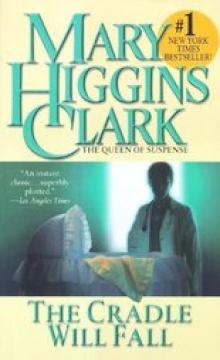 Clark, Mary Higgins 03 - The Cradle Will Fall
Clark, Mary Higgins 03 - The Cradle Will Fall Moonlight Becomes You
Moonlight Becomes You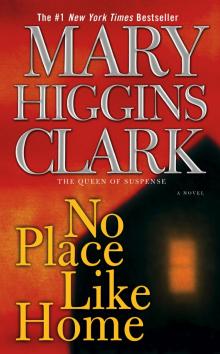 No Place Like Home
No Place Like Home I've Got My Eyes on You
I've Got My Eyes on You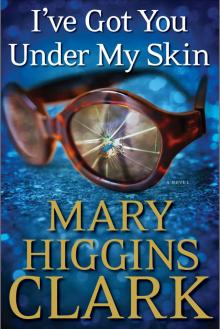 I've Got You Under My Skin
I've Got You Under My Skin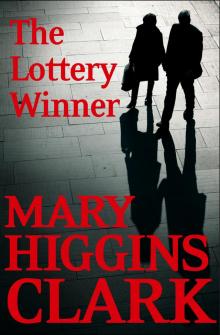 The Lottery Winner
The Lottery Winner As Time Goes By
As Time Goes By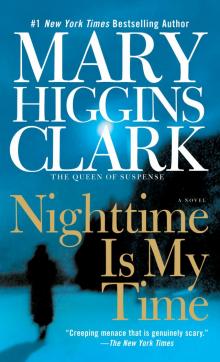 Nighttime Is My Time
Nighttime Is My Time Where Are the Children?
Where Are the Children? The Lost Years
The Lost Years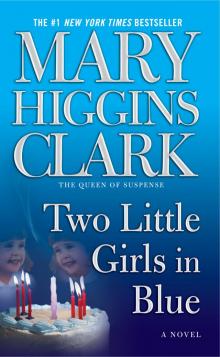 Two Little Girls in Blue
Two Little Girls in Blue Mount Vernon Love Story: A Novel of George and Martha Washington
Mount Vernon Love Story: A Novel of George and Martha Washington All by Myself, Alone
All by Myself, Alone The Melody Lingers On
The Melody Lingers On Just Take My Heart
Just Take My Heart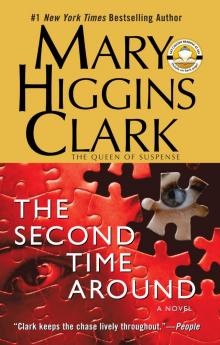 The Second Time Around
The Second Time Around A Cry in the Night
A Cry in the Night Deck the Halls
Deck the Halls We'll Meet Again
We'll Meet Again Before I Say Goodbye
Before I Say Goodbye Piece of My Heart
Piece of My Heart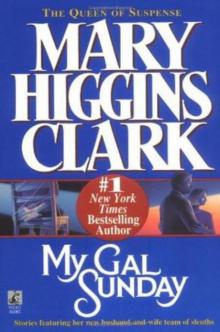 My Gal Sunday
My Gal Sunday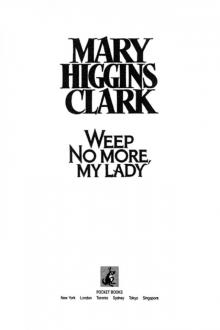 Weep No More, My Lady
Weep No More, My Lady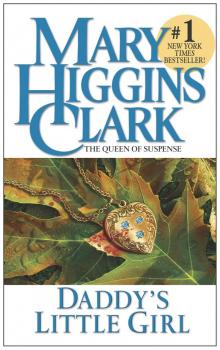 Daddy's Little Girl
Daddy's Little Girl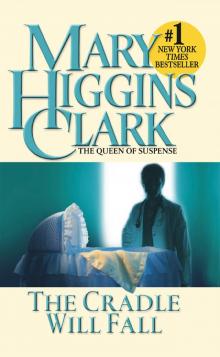 The Cradle Will Fall
The Cradle Will Fall Manhattan Mayhem: New Crime Stories From Mystery Writers of America
Manhattan Mayhem: New Crime Stories From Mystery Writers of America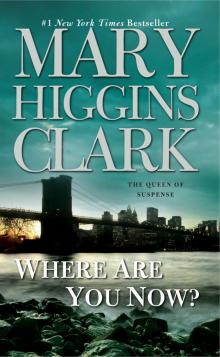 Where Are You Now?
Where Are You Now?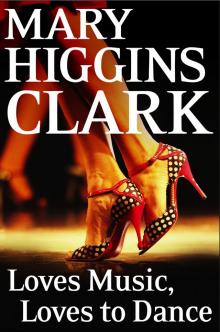 Loves Music, Loves to Dance
Loves Music, Loves to Dance While My Pretty One Sleeps
While My Pretty One Sleeps Pretend You Don't See Her
Pretend You Don't See Her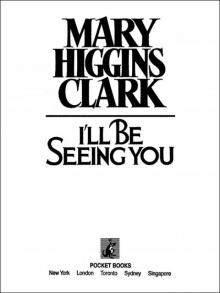 I'll Be Seeing You
I'll Be Seeing You Let Me Call You Sweetheart
Let Me Call You Sweetheart Remember Me
Remember Me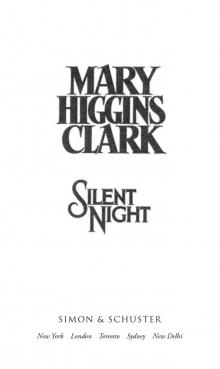 Silent Night
Silent Night Kitchen Privileges
Kitchen Privileges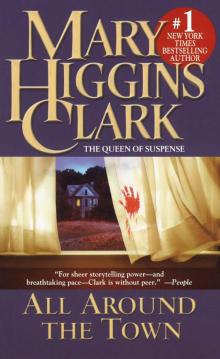 All Around the Town
All Around the Town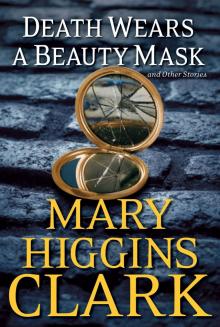 Death Wears a Beauty Mask and Other Stories
Death Wears a Beauty Mask and Other Stories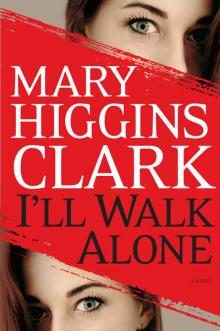 I'll Walk Alone
I'll Walk Alone The Shadow of Your Smile
The Shadow of Your Smile Kiss the Girls and Make Them Cry
Kiss the Girls and Make Them Cry Manhattan Mayhem
Manhattan Mayhem Deck the Halls (Holiday Classics)
Deck the Halls (Holiday Classics)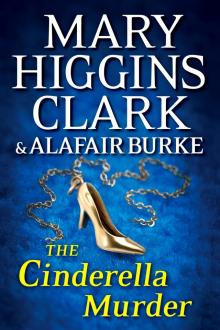 The Cinderella Murder
The Cinderella Murder All Dressed in White
All Dressed in White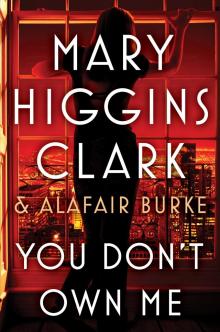 You Don't Own Me
You Don't Own Me The Christmas Thief
The Christmas Thief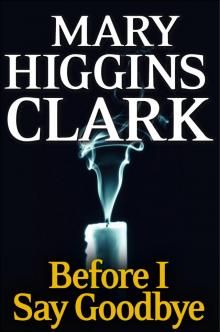 Before I Say Good-Bye
Before I Say Good-Bye Dashing Through the Snow
Dashing Through the Snow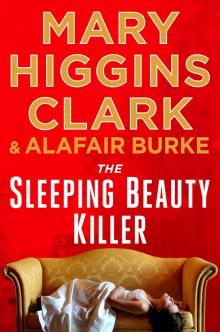 The Sleeping Beauty Killer
The Sleeping Beauty Killer Mount Vernon Love Story
Mount Vernon Love Story Santa Cruise
Santa Cruise I 've Heard That Song Before
I 've Heard That Song Before